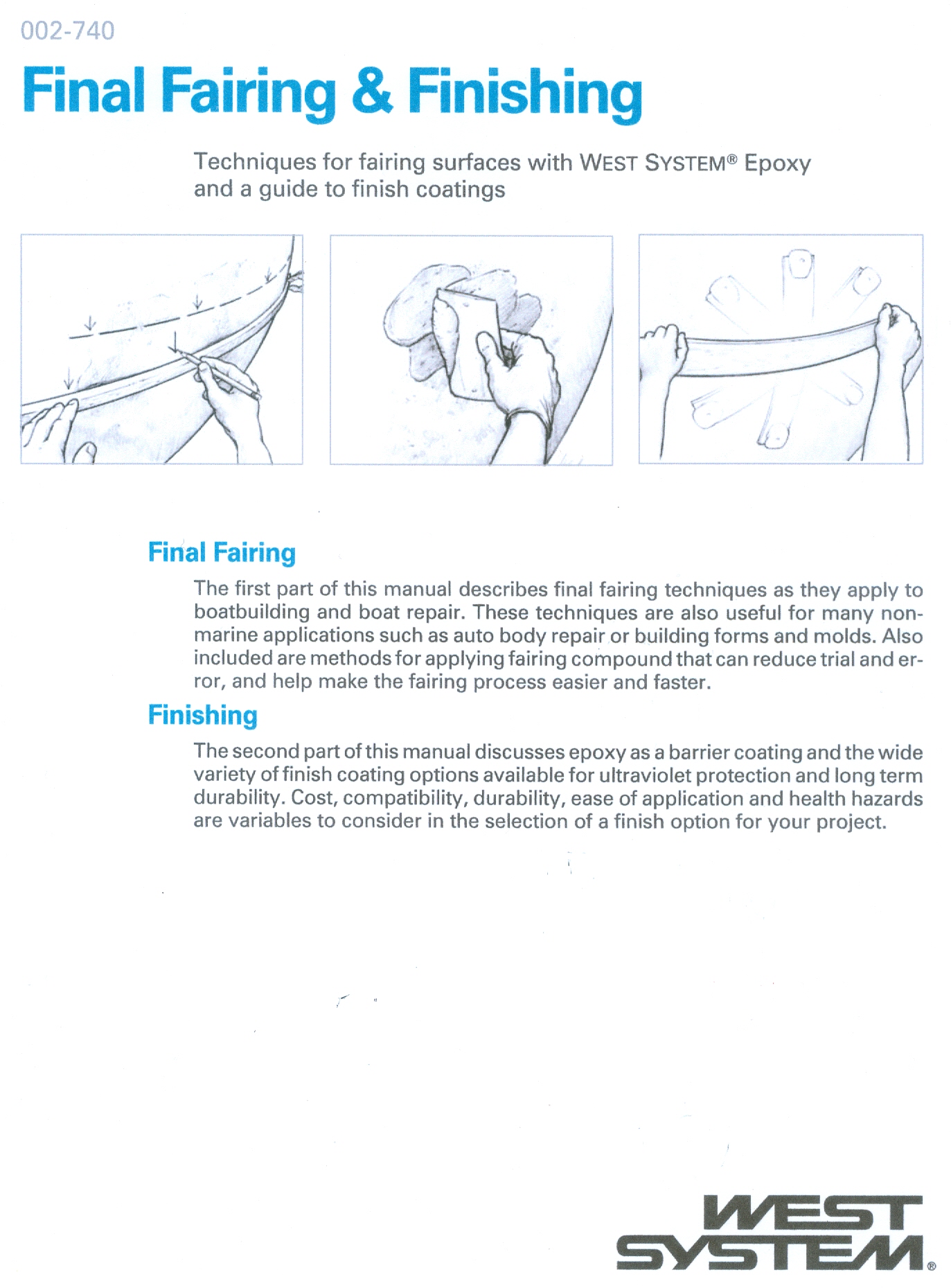 |
This is another excellent book which we highly recommend. That's why we
provide it. If
we don't like a book we usually don't even review it. There are 29 pages of excellent
information here. Nevertheless, we would be remiss if we didn't mention the few areas of
disagreement we have with the books we review. You can consider this review a sort of
supplemental chapter for your use. On page 3 in section 1.2 mention is made of various tools that can be used in rough fairing. Among those mentioned are disc sanders and belt sanders. On rare occasions we have used disc sanders to remove large volumes of material quickly and sometimes have used belt sanders on very flat surfaces to remove rough material. However in no sense can we recommend anything with a "running edge" for anything resembling fairing. These tools are inherently improper for fairing and no attempt should be made to do so. For rough fairing such as is described in this section the most aggressive tool you should consider is a random orbit sander. There are some nice ones that we use that have a vacuum hose attachment and take rapidly changeable stick on circular sandpaper pieces with holes in them to suck up the dust. These do a good job and when kept moving are unlikely to reduce fairness. The remarks on long board type sanding on page 4 and in the appendix are important. I do find that their recommendations on board thickness seem pretty stiff. I prefer a thin board of aircraft plywood. www.aircrafspruce.com It is lighter and while it still bends to a fair curve you don't have to exert a lot of pressure to try to bend it. Less pressure means less sanding effort. I'm interested that it is mentioned on page 5 that you can "wet sand" the epoxy "into" the metal with coarse sandpaper for the very best adhesion. This was the favorite method of a friend of ours with a 32' sloop. He swore by this method and I've got to say he had less maintenance work each year on his steel sloop than most people would believe possible. I use a sandblasting rig and coat with epoxy immediately after blasting, but it sure seems like you get just as good results with the "wet sanding" method. On page 6 when they refer to "notched squeeqees" it is important to remember that Gougeon Brothers sells the best of these that I have seen. They talk in this book as though you are making your own. It is much more economical to buy them from Gougeon Brothers, or your local WEST System(tm) dealer. I particularly like the finishing section. One almost never hears anyone point out nowadays that you should use the coarsest sandpaper that will not show scratches through the particuluar paint. For some reason nowadays people confuse "fairness" with "smoothness" and will often use such fine grits in preparing the surface for painting that the paint won't stick at all. The more scratched up the surface the better the paint will stick. So as long as the scratches don't show through the paint the coarser they are the better. On page 20 it is carefully mentioned that two part linear polyurethanes are very hazardous, that spraying requires forced air breathing equipment, and that rolling and tipping produces a lot less hazardous vapour in the air. All of this is true but I would add that I cannot endorse the idea of amateurs using these products at all. In my opinion even professionals should not spray these materials and if a professional rolls and tips them they should wear complete full body suits with forced air. In hot climates the air should go through the entire suit to ensure that the worker will not be tempted to remove all or part of their protection. In appendix "B" there are some notes on rudder and keel shapes. I would add that it can be useful to study the book "Theory of Wing Sections" by Abbott & Doenhoff. While this is about aircraft wings a careful reading will suggest some general ideas that are useful. (tm) 29 pages, profusely illustrated, $7.50 |